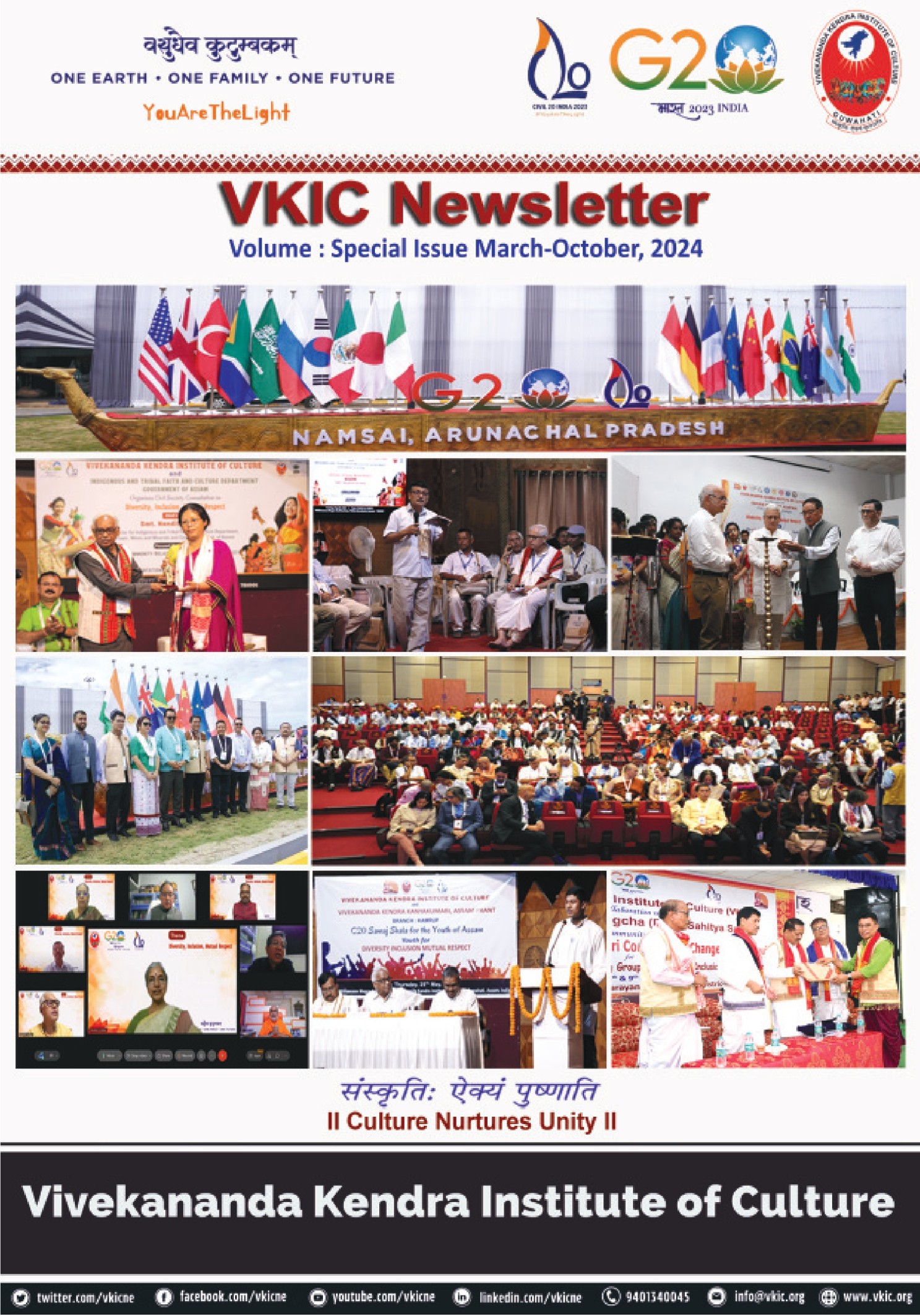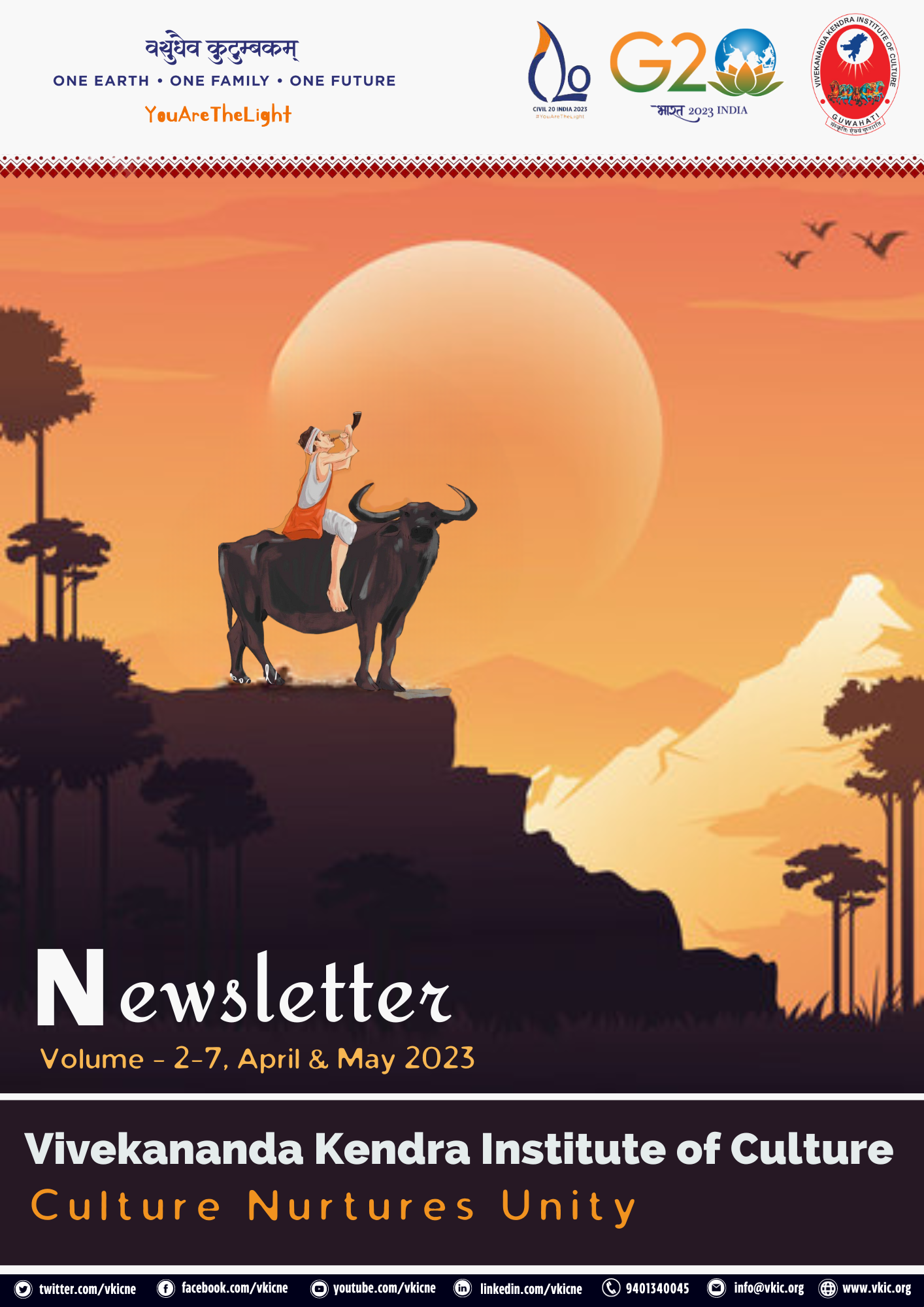The foundation of the Khasi society is based on the concept of Kur and Kha. Ka Tipkur ka Tipkha is a respectful recognition of the basic social structure, which consists of either maternal or paternal relationships. All those who are descendants of the same ancestral mother belong to the same Kur or clan and members of the father’s clan are not Kur but Kha. It enjoins all to know and respect each other, to recognize one’s relation on both sides and to give due regard to them. It involves an intricate network of kinship relationship and sentiments, obligations, convictions and beliefs that weave the Khasi society together. Each clan (kur) has its triad- ka Tawbli, the ancestral mother, U Thawlang, the ancestral father and U Suidria, the eldest brother or the eldest son of Ka Tawbli who is the ancestral maternal uncle of the clan.
All trace their origin to the seven huts or seven families (Hynniep Trep Hynnies Skun) who were the progenitor of the whole Khasi race and from them the organization of the Khasi and the inter-clan relationship is based. Each hut or trep signifies a Kur. Kur or clan multiplied and increased in numbers out of 0intermarriage among the different kurs. Each kur traced its descent to Ka Tawbli Tynrai or root ancestors. The kur is subdivided into jaids, which claim ka Tawbli tymmen or old ancestress or their ancestress. The jaids are further subdivided into a number of kpohs, which claim Ka Tawbli Khyraw or young ancestress or their ancestress. Each kapoh is further subdivided into a number of families or -ing and belong to the sam jaid. A family in the past consisted of the father, mother, brother and sisters not yet married, sons and daughters who were not married and also the grand children. At present there is a kind of change taking place in the family, which now consists of only the father, the mother and the children, which is more or less like a nuclear family that does not include other members having close relations.
The traditional Khasi system of marriage has been quite simple, both love and arranged marriages were permissible. Marriage is prohibited between people who are related by blood which means that clans who descend from common ancestors could not intermarry as it is believed that it is an incest or a great sin. As it is a taboo, this system is quite strict. Not only this, marriage cannot take place between a man and a woman whose father and mother have blood relations. It is a great sin to marry within the related clans, so for those who go against the basic principle they will be ex-communicated from their kinsfolk. There is complete rejection either in the rites and rituals or in inheriting the property of the family. When such people die, his or her bones will not be collected and mixed in the family ossuary after cremation, as cremation also is not done by the family members of the clan.
In a Khasi marriage, the husband is the son from one clan (kur) who marries a daughter from another clan where there is no blood relations. Therefore marriage among the Khasis takes place between two clans. It is a bond between a man and a woman, a bond for cooperation and understanding to build a new home. It is one of the many duties that man should perform in this world. It is a bond, which connects two kurs, the kur of a man and the kur of a woman from different ancestral mothers, not from the same clan. As pointed out, “Marriage between members of the same clan is an abomination and it is called ‘ka snongsang’. It is because of this fear of incest and irregularity in the notion of Tip kur that the Khasi is very meticulous when proposals for marriage come to the uncles from their children”1.
Marriage among the Khasis is very sacred; the most remarkable feature of the Khasi marriage is that it is usual for the husband to live with his wife in his mother-in-law’s house, and it is not for him to take his bride home, as it is the case in other communities. When a man marries a non-heiress after having one or two children, and if the married couple gets on well together, the husband in many cases removes his wife and children to a house of his own.
In the past there was only arranged marriage and love marriage was nearly unknown. Marriage must be arranged by the parents and those who stayed together as husband and wife or who settled down without the consent of the parents, were looked down upon. There are two types of marriages - the first one is ‘Ka pynhior synjat’ that is exchanging of rings between a man and a woman who would be husband and wife. Another type of marriage is ‘Ka lamdoh’ where there is no exchanging of rings. On the appointed day, the groom along with his kith and kin starts from his house to the bride’s house. As the tradition does not prohibit the groom’s father to accompany him, so also the groom’s mother and her female relations are not allowed to do so.
In a marriage ceremony there must be a maternal uncle (U Kni) from the bride’s side and a maternal uncle on the groom’s side as well. They are called ‘Ki Kseangs’ or the negotiator who will cite the marriage ceremony. It is the tradition that “The Kseang from the male side introduces the groom, upon which the opposite spokesman welcomes and explains that he has come to stay with his wife, and continues to live with her through bright and dark days, as well as through sickness and health”2.
It is the duty of the male members from the bride’s side to welcome the groom and his party by exchanging Kwai (betel nut) before reaching the bride’s house. After this, the spokesman recites from each side and declares the marriage of the bride and the groom. Therefore, “A dialogue between the two Kuangs marked the start of the ceremony. If during the dialogue, nothing transpires, that would go against inviting the two, then religious rite is performed and rings are exchanged with a declaration of the two as husband and wife”3.
A Khasi understands his importance. About his own life, he says thus: “from the woman sprang the species and the man is a father who gave the status and children who spring from the union of a father and a mother. Marriage existed among the Khasis from the beginning of time; a Khasi does not want to live without children or without a Jaid. To live without a Jaid is a curse. Therefore marriage to a Khasi is thought to fulfill one of the purposes of life on earth – to multiply and expand the clan, as “a married life without issues is of no value and without children, family life cannot ever begin”4.
Marriage to a Khasi means a procreating power and if the couple does not have children they are free to separate, so; “For childless couples there are only feelings of sympathy, not only from the members of each family but from the society as a whole. Frequently, relatives of either partner would come up with suggestion of separation”5.
Without any child, the woman cannot become a mother and a man cannot become a father and, as such, there can be no family. Divorce among the Khasis is socially discouraged but permissible under certain circumstances, especially when the wife does not bear any child. As it
is said, marriage is a procreating power to produce children and to expand one’s family (Bar pyniar ia tnum en tyndai). If there is no child, it affects the couples and the relatives of both sides, and so separation takes place. This separation is known as ‘Ka ia-pyllait san shying’, which is always performed in the presence of senior members of the community, preferable the Ki Kseangs who recited the marriage ceremony. There are also reasons where husband and wife feel that they cannot live together any longer. Then they can divorce through mutual consent.
Divorce cannot take place only from one side. To divorce one must get the legal dispensation from the witnessing ‘Kseangs’ or spokesmen from both sides as in the case of marriage. Both husband and wife cannot remarry until and unless they are separated. If they go against this, they have to pay the ‘Bai mynrain Khmat’, that is, a fine or a compensation for breaking the contract of marriage. As the ‘Procedure is simple, both the husband and the wife hold in their hands five cowries or five pieces of betel nut each. The husband hands over the contents of his hand to that of his wife. The later returns them with those of her own and the husband takes them and casts them away from his hand’6.
After this, there is a public declaration to the effect that the divorce is over and any one who wants to have a match with them can do so because now they are both free.
A family consists of the father, the mother and the children. The Khasis consider Ka ing an institution as the basic and most important functional unit. It represents the religious unit which keeps ancestral property and shares a common religious ceremony. This is indeed the key to the whole Khasi social organization. The Ing lays stress on maternal solidarity. Membership of the Ing is determined through the mother. The central care of the Ing comprises two persons, one holding the authority and the other owing the property, the rule of succession being strictly matrilineal.
In a Khasi family the father is the son from one clan who marries the daughter from another clan with whom there is no blood relation. He is the executive head of the wife’s family. He is a bread earner who faces the ups and downs to look after the welfare of the family. He takes upon his shoulders all the responsibility; he stands in the middle between his clan and his wife’s clan but he has no part in the religious ceremony or share of the ancestral property of his wife. As a father and progenitor he is honored and held in high esteem. The grateful expression of the Khasi child to his father is in Kpa uba lah uba lai, ba ai ka longryming (an able father who gives life and stature). This explains the position of the father; but when he dies his clan reclaims him. His wife and children cremate his body.
Reference:
1. P Malngeang, Aspects of Khasi Philosophy, 1991, pp- 62, 63.
2. H Bareh, The History and Culture of the Khasi People, 1997, p- 292.
3. B S Rana, The People of Meghalaya, 1989, p. 78.
4. H O Mawrie, The Khasi Milieu, 1981, p. 65
5. Ibid
6. H Bareh, The History and Culture of the Khasi People, p. 295.


